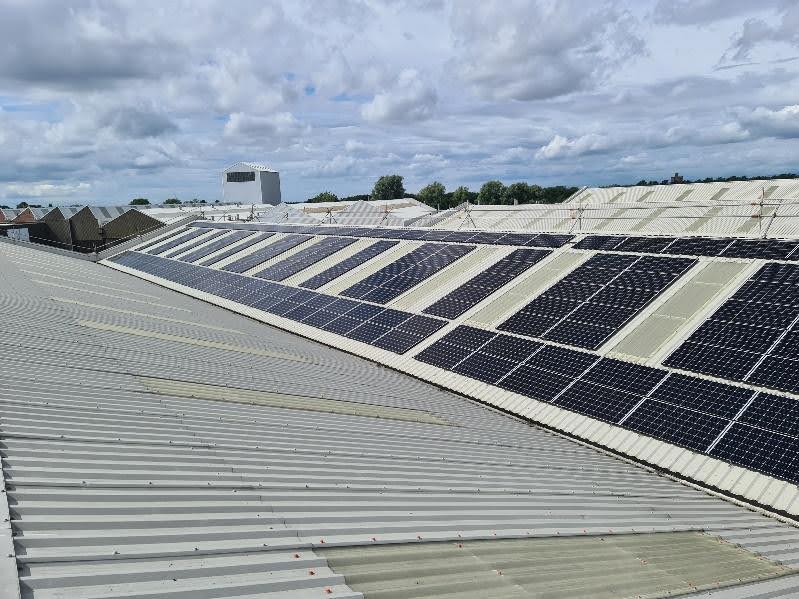Energy storage is poised to transform the electricity industry. In the U.S. alone, energy storage will grow 6x, from 120 megawatts to over 720 megawatts by 2020. Globally, it will bring power for the first time to over a billion people by letting them tap into micro-grids.
Lithium and vanadium have both been offered up as a basis for the storage economy. But which technology will win? Here are some facts about each – draw your own conclusions.
Cell Design
Lithium
Lithium batteries store their energy in cells. Some are flat. Some are cylindrical, but you’re familiar with what they are: relatively small, self-contained devices that get hot. There are probably two in your phone and six in your notebook. But in a grid scale storage system, you need hundreds of thousands of them. It would be sort of like building an industrial-scale cold storage facility with a bunch of portable refrigerators. You can do it; it just won’t work well.
Vanadium
Vanadium flow batteries store their energy in tanks. The electrolyte — the fluid that transfers charges inside a battery — flows from one tank through the system back to the same tank. The tanks can be fish tank size or bigger than an above ground pool. As a result — and you will see this over and over again — it’s much easier to adapt flow batteries to industrial-scale applications without adding a lot of cost. You just make the tank bigger.
Cost
Lithium
Bloomberg New Energy Finance says the average cost of a lithium-ion based storage system is $1,750 a kilowatt hour. The cost includes the cells, electronics, installation and balance of systems expenses. By 2020, Baird Research projects that Tesla Motors’ planned gigafactory will be able to produce energy storage systems for $400 a kilowatt hour — all in — and sell them for $500 a kilowatt hour.
Vanadium
Some vanadium batteries already provide complete energy storage systems for $500 per kilowatt hour, a figure that will fall below $300 per kilowatt hour in less than a year. That is a full five years before the gigafactory hits its stride. By 2020, those energy storage systems will be produced for $150 a kwh.
Then there is scaling. If you want to double the size of a lithium system, you double the price: a ten kilowatt system would cost $17,500. With vanadium, you just increase the size of the tank, so the price per kilowatt hour goes down. Suddenly, the prices are going in different directions. Bigger is better.
Lifetime
Lithium
Grid batteries have to last for decades. The average age of a substation transformer in the U.S. is 42 years. Lithium ion batteries have a finite life. Performance degrades over time and is impacted by heat, operating conditions and how deep, and how often, they have been discharged. Battery University notes that the capacity of lithium ion cells can drop to a 50 percent level after 1,200 to 1,500 discharges.
Vanadium
Vanadium-based flow energy storage systems can operate forever. The active ingredient is a low-cost, rechargeable electrolyte, which never wears out due to the type of chemical reaction involved. The electronics and software to manage the system can be easily upgraded like any computer. The last major component — the plastic tanks for holding the electrolyte — lasts for decades.
Applicable Markets
Lithium
So with lithium you’ve got a small, expensive battery with a finite lifetime. To build a storage system for running demand response programs or a backup system that can provide four to six hours of power, you need thousands of cells. It’s like building a warehouse-scale facility with suitcases.
But it gets worse. Lithium batteries also are subject to “thermal runaway” reactions, i.e. they can blow up.
Vanadium
Vanadium-based systems are made for industrial-size applications from a few kilowatts to several megawatts. And there is no danger of thermal reactions.
Manufacturing and Scalability
Lithium
Manufacturing lithium ion cells isn’t easy. Lithium ion cell maker A123 Systems filed for bankruptcy less than three years after it held an IPO.
“The lithium ion battery manufacturing space is not for the weak of heart,” says Sam Jaffe, senior research analyst with Navigant Research. “The electric vehicle market is growing slowly and the battery manufacturers are engaged in a Darwinian fight for survival.”
Tesla Motors’ Gigafactory would double the worldwide capacity to 50 Gigawatt hours worth of batteries and cost $5 billion dollars. It’s a big risk. It’s also worth noting that there is already significant unused lithium ion battery manufacturing capacity among vendors in Korea, China and Japan.
Vanadium
Setting up a Vanadium storage manufacturing facility is simple and very low cost — orders of magnitude less expensive than the proposed Gigafactory. The production process is also simple, and ecologically safe. The electrolyte and other active components are combined as one process step, the enclosure, made of pipes, tanks and electronics is assembled as a second process step, and they are then assembled into battery packs. As a result, total worldwide capacity can “flow” much easier: manufacturing capacity can be added incrementally.
Efficiency
Lithium batteries are 85 percent efficient over shallow discharges when new. Flow batteries are around 75 percent efficient. But if you operate lithium ion batteries in an environment above 40 Celsius, the charge rate (i.e. the time it takes to charge) drops by 25 percent and the lifetime cycles drop by 33 percent. Below minus 20 Celsius, the charge rate drops by 40 percent. Imergy’s Vanadium batteries aren’t impacted.
Environmental Impact
Lithium
Lithium batteries for the most part aren’t recycled. Economically, it is just not worth it. The price of battery grade lithium hydroxide has more than tripled to $7,600 a ton.
Most lithium comes from mines and brine pit operations in Australia, Bolivia, Chile and Argentina. Talison Lithium, the largest producer in the world, extracts more than 350,000 tons of lithium ores out of a single mine a year.
Vanadium
Vanadium can be extracted vanadium mine tailings, depleted oil wells and oil storage depots as well as environmental hazards.





